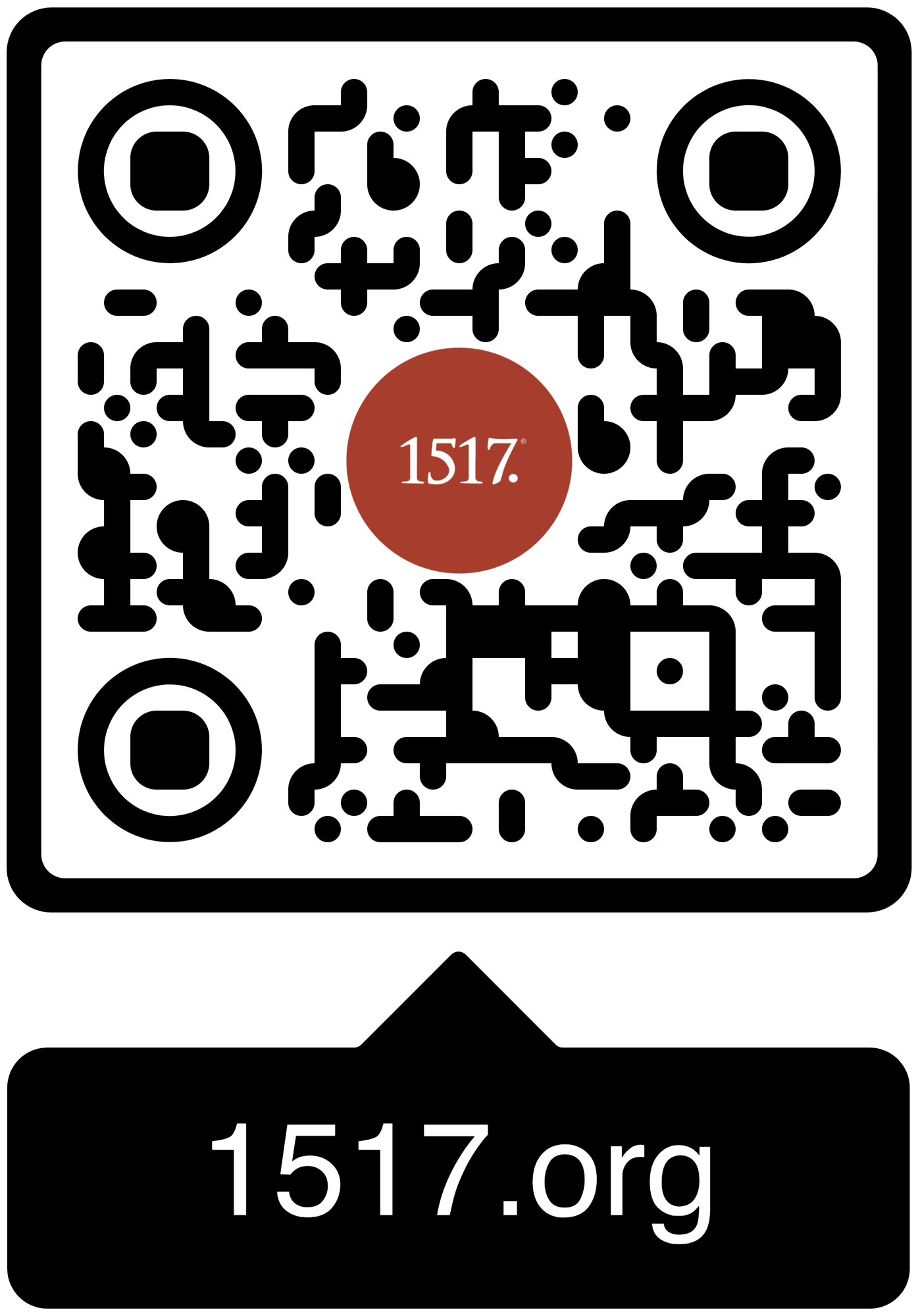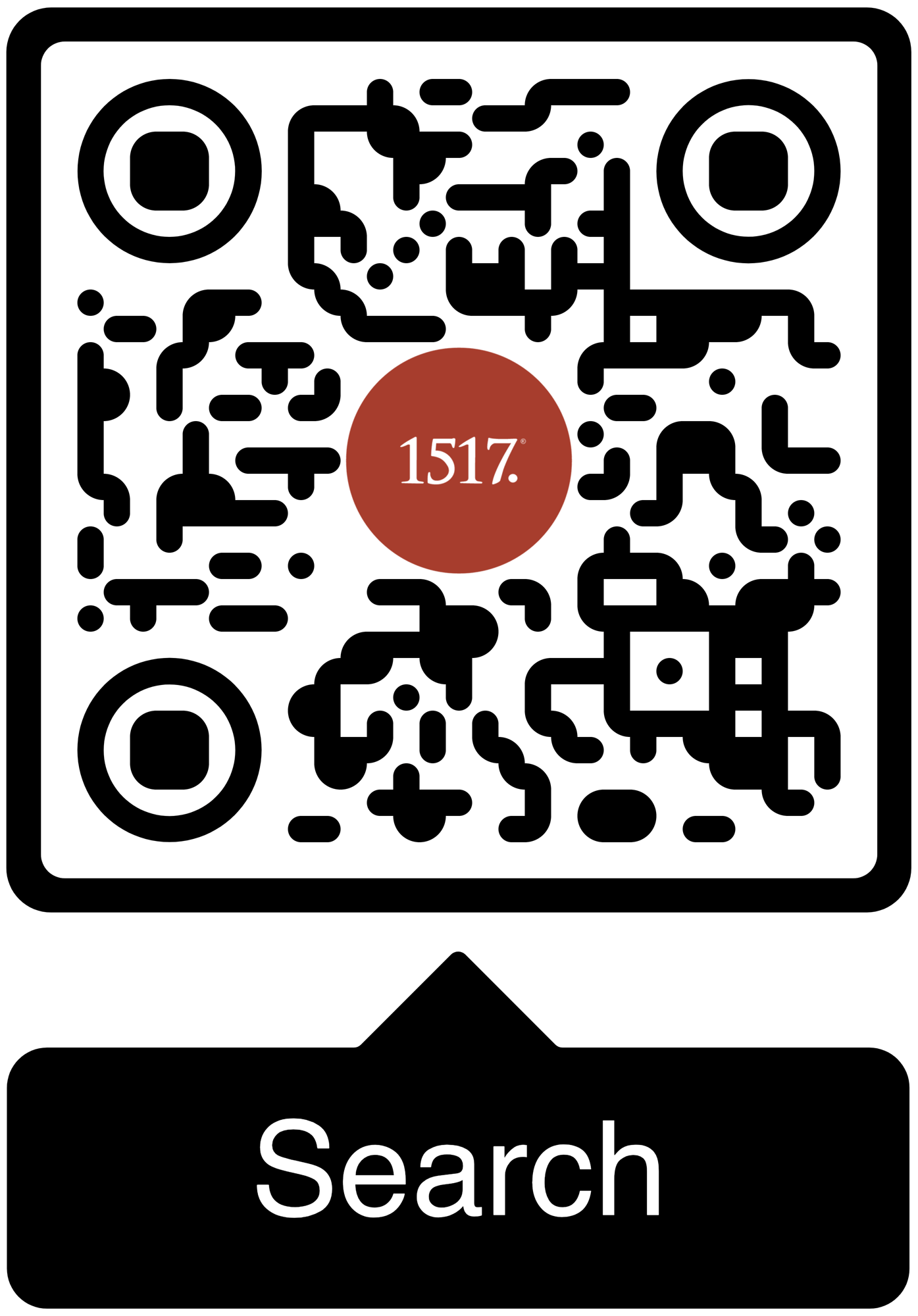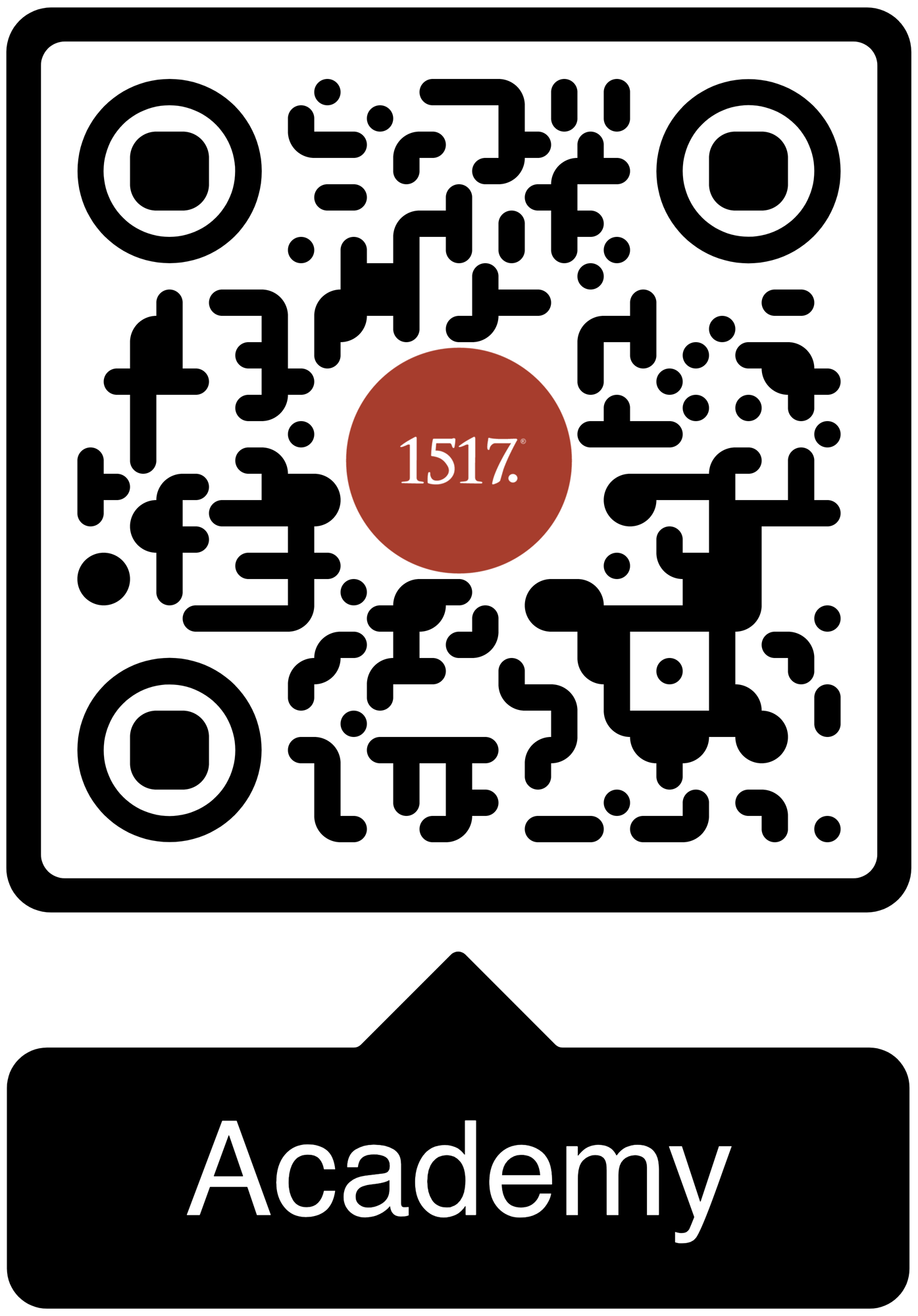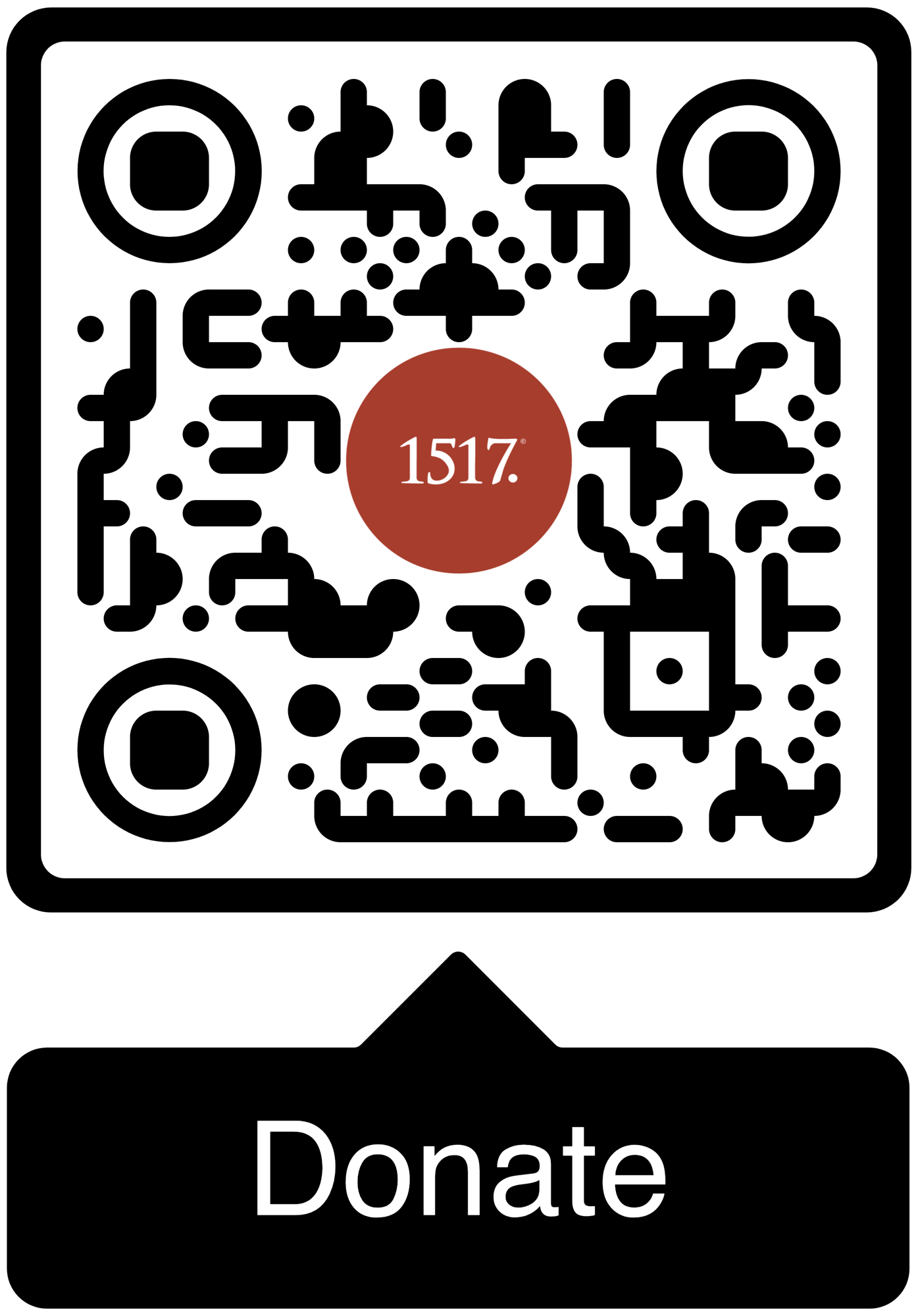We don’t flinch at sin. We speak Christ into it.
07/07/25
One might say that the first statement of the Reformation was that a saint never stops repenting.
07/04/25
Wisdom and strength require bootstrap-pulling and the placing of noses to grindstones.
All Articles
Author
- All Authors
- 1517 Publishing
- 1517 Staff
- A. A. Just Jr.
- A.J. Vega
- Aaron Boerst
- Adam Francisco
- Adam Stetson
- Amy Mantravadi
- Andrew Foss
- Anthony DiLiberto
- Blake Flattley
- Bob Hiller
- Bob Sundquist
- Bonnie Petroschuk
- Brad Soenksen
- Bradley Gray
- Brandon Hanson
- Brandon Pangman
- Brennan Manning
- Brian W. Thomas
- Bror Erickson
- Bruce Hillman
- C.S. Lewis
- Caleb Keith
- Chad Bird
- Charles E. Fry
- Christopher J. Richmann
- Cindy Koch
- CJ Armstrong
- Craig Donofrio
- Dan Chrismer
- Dan van Voorhis
- Dan Weber
- Daniel Deen
- Daniel Emery Price
- Daniel Stenberg
- David Clay
- David Rufner
- David Schmitt
- Delwyn Campbell
- Dominick Santore
- Donavon Riley
- Edward Killian
- Elyse Fitzpatrick
- Erick Sorensen
- Gage Jordan
- Gerhard Forde
- Grant Klembara
- Greg Koukl
- Gretchen Ronnevik
- Haroldo Camacho
- Hermann Sasse
- Jacob Corzine
- Jacob Smith
- Jake Allstaedt
- Jared C. Wilson
- Jason Lane
- Jason Lang
- Jason Oakland
- Jay Sawrie
- Jeff Mallinson
- Jeffrey Pulse
- Jenifer Mohan
- Jessica Delgado
- Jessica Thompson
- Jim Nestingen
- Joel Fitzpatrick
- Joel Hess
- Joey Goodall
- John Bombaro
- John Bortulin
- John Chrysostom
- John T. Pless
- John W. Hoyum
- John Warwick Montgomery
- Jonathan Ruehs
- Jordan Spina
- Joshua Miller
- Justin Rossow
- Karen Stenberg
- Kathy Morales
- Katie Koplin
- Kelsi Klembara
- Ken Sundet Jones
- Kerri Tom
- Kevin Hale
- Kevin McClain
- Kyle G. Jones
- Larry D. Hughes
- Laura Bauer
- Luke Kjolhaug
- Magnus Persson
- Mariah Coward
- Mark Jasa
- Mark Mattes
- Mark Pierson
- Martin Luther
- Matt Johnson
- Matt Kroelinger
- Matt Popovits
- Michael Berg
- Michael Gibney
- Nicholas Hopman
- Nicholas Kallis
- Norman Nagel
- Paul Dunk
- Paul Koch
- Pete Lange
- Peter Nafzger
- Philip Bartelt
- Preston Sprinkle
- Raleigh Sadler
- Rick Ritchie
- RJ Grunewald
- Robert Farrar Capon
- Robert Kolb
- Rod Rosenbladt
- Roland Ehlke
- Ron Hodel
- Ryan Couch
- Ryan Matthias
- Ryan Stevenson-Cosgrove
- Ryan Tinetti
- Sam Leanza Ortiz
- Sam P. Schuldheisz
- Sarah Crowder
- Scott Davis
- Scott Keith
- Scott Landrum
- Seth Moorman
- Steve Byrnes
- Steve Kruschel
- Steven A. Hein
- Steven Paulson
- StoryMakers NYC
- Tanner Olson
- Tate Barber
- Ted Rosenbladt
- Travis Scholl
- Tyler Cronkright
- Uwe Siemon-Netto
- Valerie Thur
- Wade Johnston
- Walter Hwang
- Wayne Sender
- Zack James Cole
06/04/20
God doesn’t permit me to write you off regardless of who you are or what you may have done. Nor does he allow you to dismiss me because I might not fit your image of a vessel of God’s mercy.
05/21/20
In the middle of the spring, on a run-of-the-mill Thursday, the ascension interrupts the mundane to herald the extraordinary: Christ is in charge and is present on earth as he is in heaven, guiding history for the sake of his church.
05/07/20
We all live with the knowledge of good and evil, but lack the power or ability to affect either one. We can judge good and evil but we cannot control them.
04/22/20
When Christians die, heaven does not “get another angel.” We cannot become angels any more than we can become giraffes or ocean waves or stars. We are people and will remain so after this present life. God did not make a mistake when he made us human.
04/09/20
So let’s go to dark Gethsemane. For there we see that even in his greatest moment of weakness, Jesus is our only source of strength. He drinks the cup of wrath so we can drink the cup of grace.
04/01/20
The throne of grace is always available to us. For the Christian, it isn’t and never will be a throne of judgment. All of the judgment for all of our sin was laid upon our perfect Savior.
03/30/20
Look to the crucifix. There you see God as God is, in Himself. You see God in action for you.
03/25/20
Luke presents Mary to us as a model of Christian faith and discipleship. On this Festival of the Annunciation, I invite you to consider this view of the Virgin Mary for your own life of devotion and faith in Christ.
03/23/20
When Luther's barber, Peter Beskendorf, asked him how to pray, Luther wrote him an open letter that has become a classic expression of the "when, how, and what" of prayer. It is as instructive today as when it was first penned it in 1535.
03/05/20
When we pray, “Thy will be done,” we are praying a cosmic, grand and mighty prayer.
02/27/20
The Second Petition: Thy Kingdom Come
02/21/20
Though not without his faults, Anselm of Canterbury is unquestionably one of the great theologians of the last millennium.
1517 is a Christian non-profit (501(c)3) multi-media organization. Our mission is to declare and defend the Good News that we are forgiven and free on account of the death and resurrection of Jesus alone.





1517 grants permission for our free online resources to be printed, photocopied, and otherwise used freely for private and church use. We require that authorship and source (1517.org) are referenced and maintained. These resources may not be sold or included in any publications for sale.


%2c_by_John_Trumbull.jpg?width=700&height=555&name=Declaration_of_Independence_(1819)%2c_by_John_Trumbull.jpg)